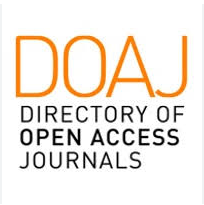HOGYAN BEFOLYÁSOLTA A 4. IPARI FORRADALOM A MAGYAR TELEKOMMUNIKÁCIÓS SZEKTOR CÉGEINEK PÉNZÜGYI HELYZETÉT 2013 – 2017 KÖZÖTT?
Absztrakt
A 4. ipari forradalom gyökeresen megváltoztatja a gazdasági és társadalmi folyamatokat és kapcsolatokat. Az elmúlt években Magyarországon kiemelt érdeklődés övezi az olyan új technológiai, informatikai start-up cégek indítását és a meglévők fejlesztését, amelyek ki tudják aknázni a 4. ipari forradalom nyújtotta lehetőségeket. Ennek a folyamatnak alakítói és követői a hagyományos telekommunikációs társaságok is.
A tanulmány fókuszában a magyarországi telekommunikációs szektor áll. A magyar piacon három jelentős szolgáltató működik (Magyar Telekom Nyrt., Vodafone Magyarország Zrt., Telenor Magyarország Zrt.). Ezeknek a cégeknek a szolgáltatási színvonala napjainkban is alapvetően befolyásolja a magyar gazdaság versenyképességét.
A tanulmány egyik célja a három cég pénzügyi elemzése, amelyből képet kaphatunk arról, hogyan befolyásolta a globális-információs forradalom az említett cégek pénzügyi helyzetét az elmúlt években és a cégek közötti verseny alakulását. Vizsgálatomhoz felhasználom a 2013 és 2017 közötti évek pénzügyi-számviteli beszámolóit (mérleg, eredménykimutatás és kiegészítő melléklet) és a cégek honlapján szereplő információkat egyaránt. A pénzügyi kalkuláció felöleli a jövedelmezőségi ráták, a likviditási és a hatékonysági mutatószámok kalkulációját, valamint a vagyoni helyzet elemzését. A másik célkitűzés pedig megvizsgálni azt, hogy a magyar telekommunikációs cégek az elmúlt években milyen külső- és belső növekedési eszközökkel reagáltak a 4. ipari forradalom kihívásaira.


























